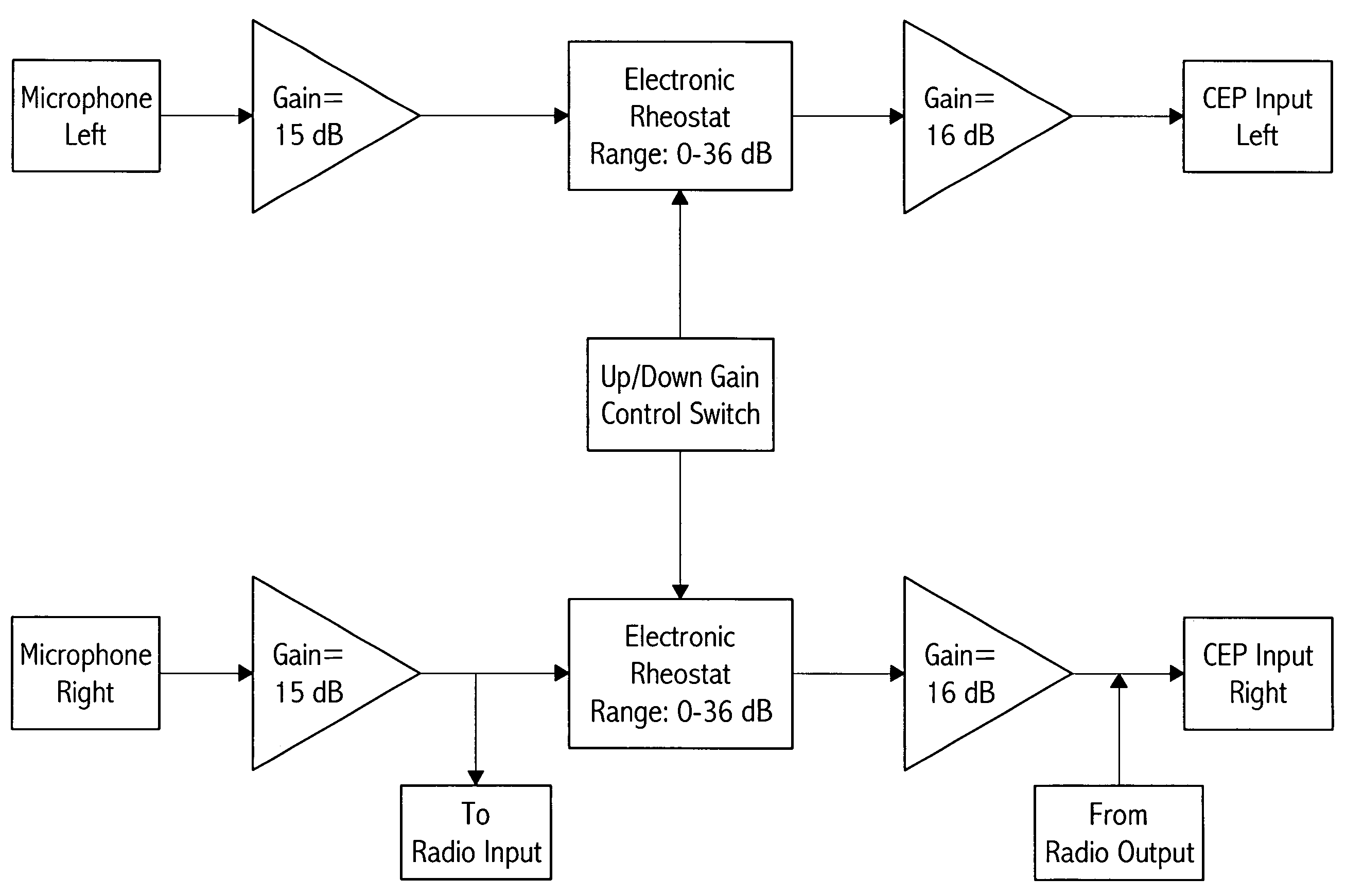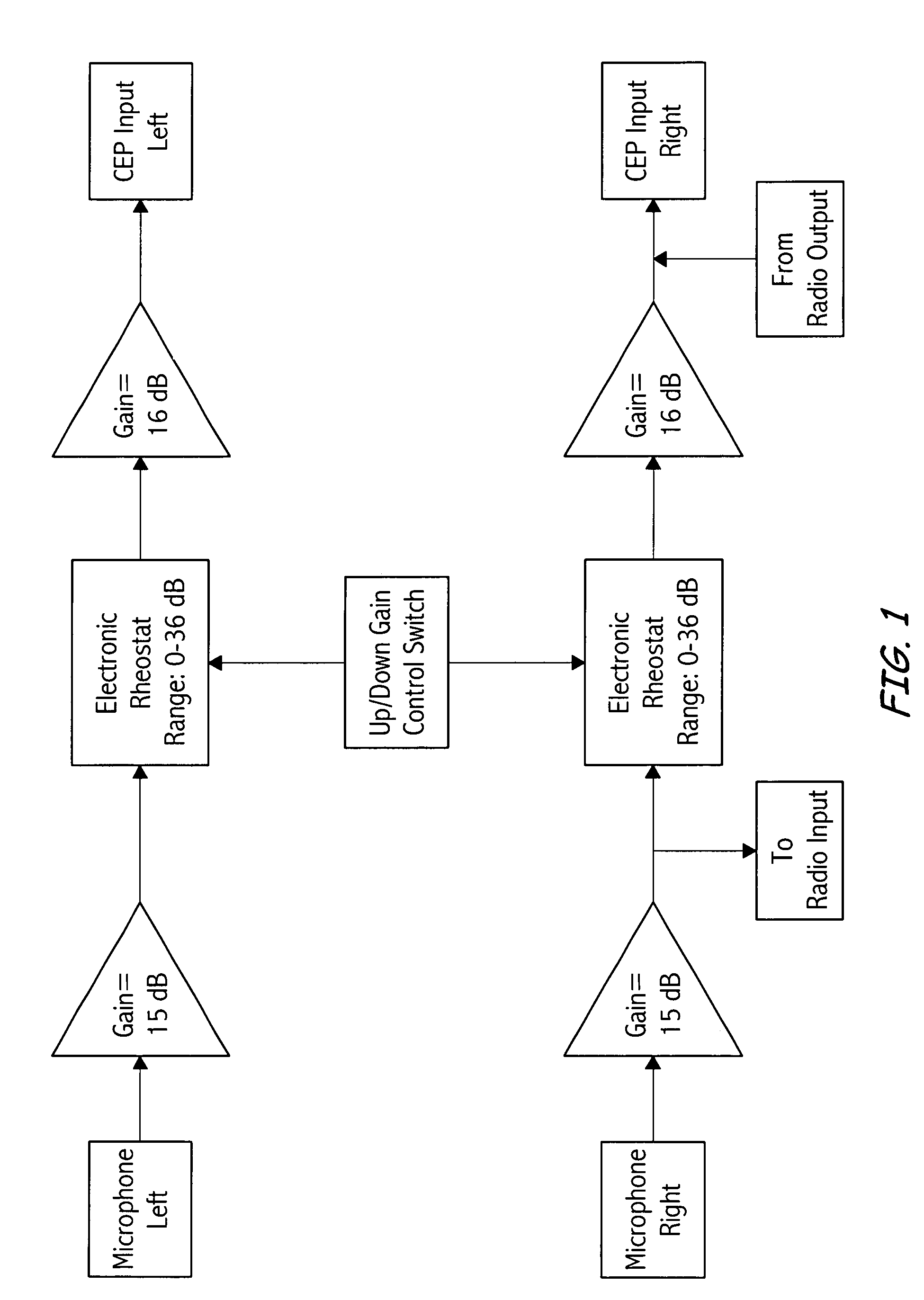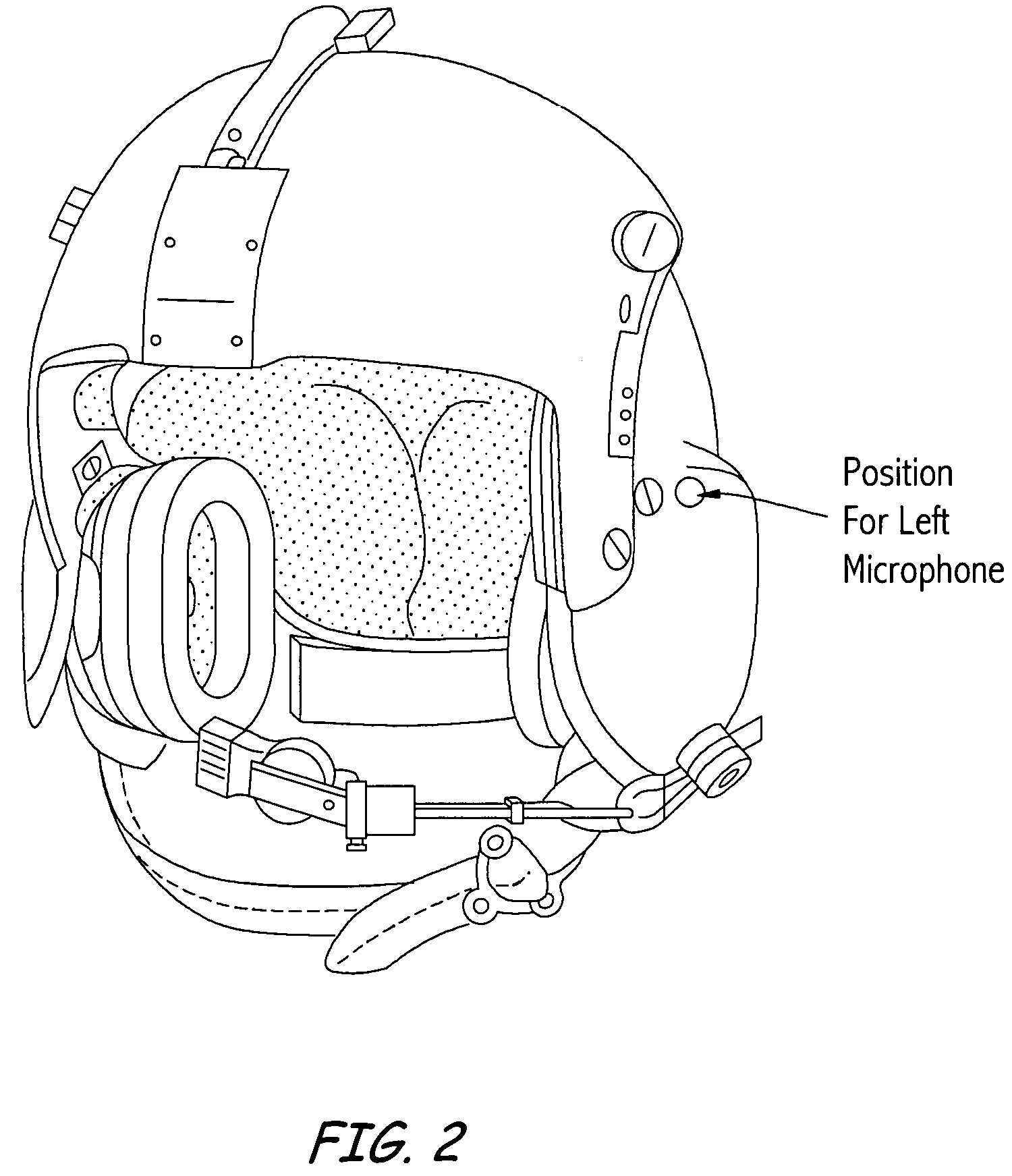Apparatus for communication and reconnaissance coupled with protection of the auditory system
a technology of communication and reconnaissance, which is applied in the direction of limiting amplitude without controlling loop, gain control, instruments, etc., can solve the problems of voltage limiting the sound output to the ear, hard limit of the system, etc., and achieve high sound level, high sound fidelity, and high sound fidelity.
- Summary
- Abstract
- Description
- Claims
- Application Information
AI Technical Summary
Benefits of technology
Problems solved by technology
Method used
Image
Examples
Embodiment Construction
[0020]In the electronic circuit in the helmet configuration (FIG. 4), ambient sounds are received via each of two microphones 1 mounted on the helmet to the left and right and forward of each ear. As used throughout this application, a “microphone” is a device that transforms sound pressure waves that impinge on a sensing element into essentially equivalent voltage signals that are supplied to the electronic circuits. In the electronic circuits depicted, in FIG. 4 and FIG. 5, the microphones have a bandwidth of 40 to 8,000 hertz. The arrangement of the invention requires that the sensitivity of the microphone be calibrated in order to establish a dB cutoff for the power supply. Other factors in adjusting the components of the invention are the frequency of the sound reaching the microphone and the microphone's sensitivity as a function of frequency. The specification for the particular microphone depicted includes a range of 6 dB, (−54.0 to −60.0 dB re 1 v / ubar) for 1000 Hertz. Othe...
PUM
 Login to View More
Login to View More Abstract
Description
Claims
Application Information
 Login to View More
Login to View More - R&D
- Intellectual Property
- Life Sciences
- Materials
- Tech Scout
- Unparalleled Data Quality
- Higher Quality Content
- 60% Fewer Hallucinations
Browse by: Latest US Patents, China's latest patents, Technical Efficacy Thesaurus, Application Domain, Technology Topic, Popular Technical Reports.
© 2025 PatSnap. All rights reserved.Legal|Privacy policy|Modern Slavery Act Transparency Statement|Sitemap|About US| Contact US: help@patsnap.com



